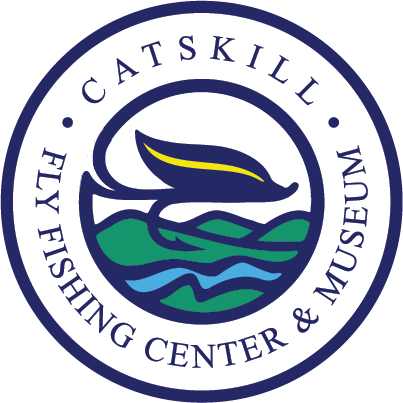Paul Young
In 1926, Paul Young’s rod designs would change the future of bamboo rods. He developed a unique line of shorter, lighter and thinner rods. At first, customers and the industry scoffed at these rods. They were considered novelties or toys not capable of catching large fish. Little did they realize the lasting impact Paul’s designs would have on rodmaking. Young’s designs flourished. To meet the increased demand, Paul used blanks from South Bend, E.W. Edwards and Heddon and finished them personally to his specifications.
Chauncey Lively recalled, “When Paul developed his Midge rod, his most diminutive rod at 6 feet 3 inches and 1 3/4 ounces, it caused quite a stir and became a very popular model. Paul mentioned several times that a customer was using a Midge for Atlantic Salmon and he fussed and fumed about it. It worried Paul because the little rod was not intended for such heavy-duty work. The customer was Arnold Gingrich, publisher of Esquire, and a distinguished author.” A short time later, A.J. McClane, a long-time fishing editor at Field and Stream, also discovered they were indeed capable of catching large Atlantic Salmon and of course he too wrote about them.
Young was more than a rod maker. His first book Making and Using the Dry Fly (1933) was revised in 1935 as Making and Using the Fly and Leader. It provided the angler with instructions on many topics, such as how to tie a fly and how to properly fish a stream. In addition to fly tying and reading the water, Young’s appraisal of the use of leaders and their construction were monumental in the development of modern day fly fishing. Being an inquisitive, thoughtful man, Young never failed to dive into the many areas of fly fishing. Given his prominence in the tackle business, his opinions held sway at all levels as evidenced by his involvement in any number of different types of hooks he helped Mustad design for fly tyers and anglers alike.
Young was also a strong proponent of and popularized the “curve cast.” Chauncey Lively observed this about Paul, “Curve-casting was almost a religion to Paul. He designed his leaders and flies to ‘lie back’ and cause the line to bow up-current of fly and leader. It is, basically, an underpowered cast executed sidearm, and it is very difficult to control accurately, particularly in breezy weather. But Paul did it with perfection and I think it had much to do with his great success as a fly fisher.” Lively recalled an incident when, “The trout was in a tough spot, sitting in a slow-water pocket surrounded by faster currents. Regardless of how much slack we threw, the fly would quickly begin dragging. The trout seemed to know it had an advantage; it would appear under the fly and drift along until the drag began. Then it would disappear. When Paul’s turn came he crossed to the opposite side of the stream, made one backhand curve-cast and caught the brownie. It looked embarrassingly easy.”
Throughout his early books, Young made it clear that fly-fishing should not be all-consuming but be about More Fishing, Less Fussing, the title of his catalogs which he later used as the title of his 1940 book. As a fly tying and fly tackle retailer, Paul developed his own line of materials, hook designs, tapered formula leaders and of course bamboo fly rods that are highly treasured today.

